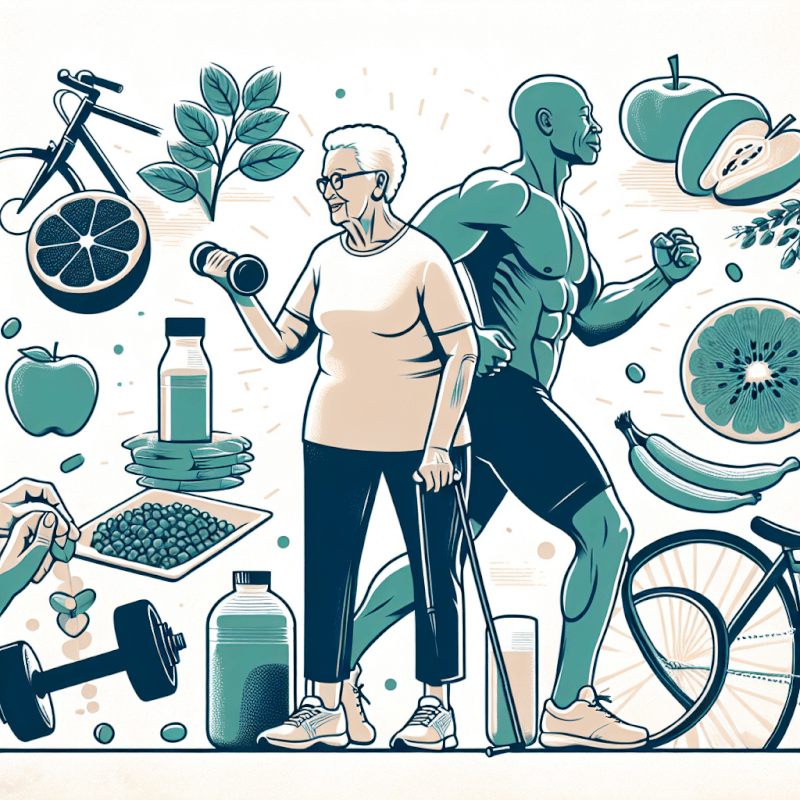As you age, it’s natural to experience muscle loss, but that doesn’t mean you have to accept it as an inevitable part of getting older. There are effective ways to address and prevent muscle loss, allowing you to maintain strength, mobility, and overall health. By incorporating regular exercise, particularly strength training, into your routine, you can stimulate muscle growth and counteract the effects of aging. Additionally, paying attention to your nutrition, particularly by ensuring you get enough protein, can support muscle maintenance and repair. With a proactive approach, you can combat muscle loss and continue to live an active and healthy lifestyle as you age.

Understanding Muscle Loss
Muscle loss, also known as muscle atrophy, refers to the decrease in muscle mass and strength that occurs as a person ages. This natural process can have various causes and can significantly impact a person’s overall well-being and quality of life.
Definition of Muscle Loss
Muscle loss, or muscle atrophy, is characterized by the progressive decrease in muscle mass and strength. As you age, your body undergoes physiological changes that make it more difficult to build and maintain muscle. This can result in a gradual decline in muscle size, as well as a decrease in muscle strength and function.
Causes of Muscle Loss
Several factors contribute to the development of muscle loss in aging individuals. One of the primary causes is sarcopenia, which is the age-related loss of muscle mass. Hormonal changes, specifically a decline in anabolic hormones such as testosterone and growth hormone, can also play a role in muscle loss. Additionally, a sedentary lifestyle, poor nutrition, and certain chronic conditions can further contribute to the development of muscle loss.
Impact of Muscle Loss on Aging
Muscle loss can have significant implications for aging individuals. Beyond the obvious loss of strength and muscle mass, it can also lead to a decline in physical performance and mobility. This can affect your ability to perform everyday tasks, leading to a loss of independence and reduced quality of life. Muscle loss has also been linked to an increased risk of falls and fractures, as well as the development of frailty.
When addressing muscle loss, it’s essential to be aware of the signs and symptoms that may indicate its presence. By recognizing these indications early on, you can take proactive steps to address and prevent further muscle loss.

Signs and Symptoms of Muscle Loss
Early detection of muscle loss can be crucial in managing and preventing further decline. Understanding the signs and symptoms can help you become more aware of your body and take appropriate measures.
Loss of Muscle Mass
One notable sign of muscle loss is a decrease in muscle size or volume. You may notice a gradual shift in your body composition, with a decrease in muscle and an increase in body fat. This change in muscle mass can be visually apparent, especially in areas such as the arms, legs, and abdomen.
Weakness and Reduced Strength
As muscle mass declines, so does overall muscle strength. Simple daily activities that were once effortless, such as lifting groceries or climbing stairs, may become more challenging. You may also notice that you tire more easily and struggle with activities that require physical exertion.
Impaired Physical Performance
Muscle loss can lead to a decline in physical performance. This can manifest as a decrease in overall endurance, flexibility, and balance. You may find it more difficult to engage in activities that were once enjoyable, such as hiking, walking, or playing sports. Impaired physical performance can impact your ability to maintain an active lifestyle and hinder your overall well-being.
Recognizing these signs and symptoms is the first step towards addressing muscle loss. Taking appropriate action can help maintain independence, prevent frailty, and enhance your overall well-being.

Importance of Addressing Muscle Loss
Addressing muscle loss is crucial for maintaining independence, preventing frailty, and enhancing your overall well-being as you age.
Maintaining Independence and Mobility
One of the primary concerns associated with muscle loss is the impact it can have on your independence and mobility. By addressing and preventing muscle loss, you can maintain the strength and functionality necessary to perform daily activities with ease. This includes tasks such as lifting objects, getting in and out of chairs, and walking independently. Preserving independence enables you to continue living an active and fulfilling life, without relying on assistance from others.
Preventing Frailty and Falls
Muscle loss has a direct correlation with frailty and an increased risk of falls. Frailty is a condition characterized by a decline in physical function, increased vulnerability to stressors, and a decreased ability to withstand illness or injury. By addressing muscle loss, you can help prevent or delay the onset of frailty, reducing the risk of falls and associated injuries. Maintaining muscle strength and balance is crucial for maintaining stability and reducing the likelihood of accidents.
Enhancing Overall Well-being
Muscle loss can impact not only your physical health but also your mental and emotional well-being. Engaging in regular exercise and strength training to address muscle loss can improve your mood, boost your energy levels, and increase your self-confidence. Additionally, preserving muscle mass and strength can help maintain optimal body function and contribute to a healthy aging process.
Prioritizing the prevention and management of muscle loss can lead to a more active, independent, and fulfilling life as you age.



